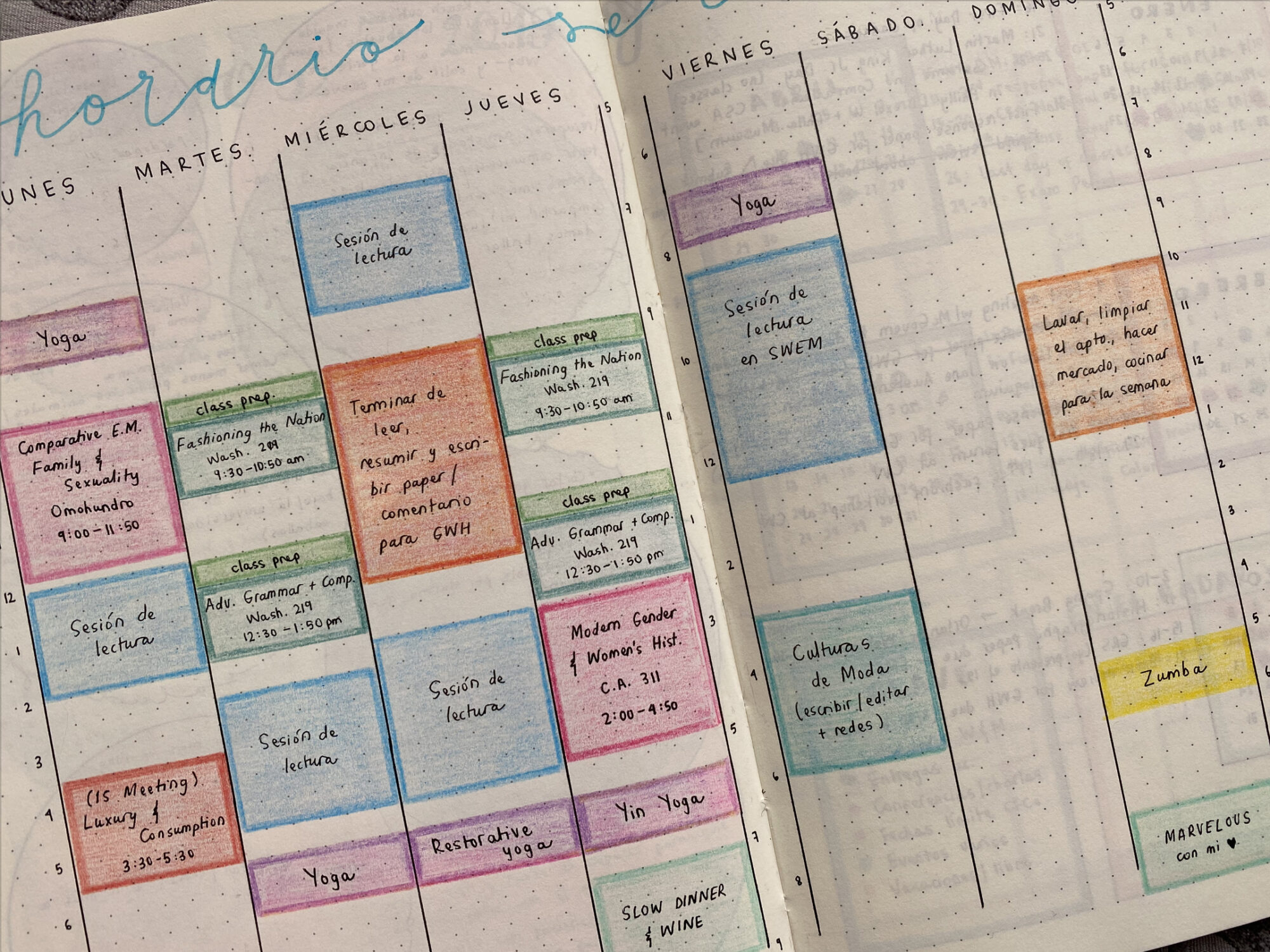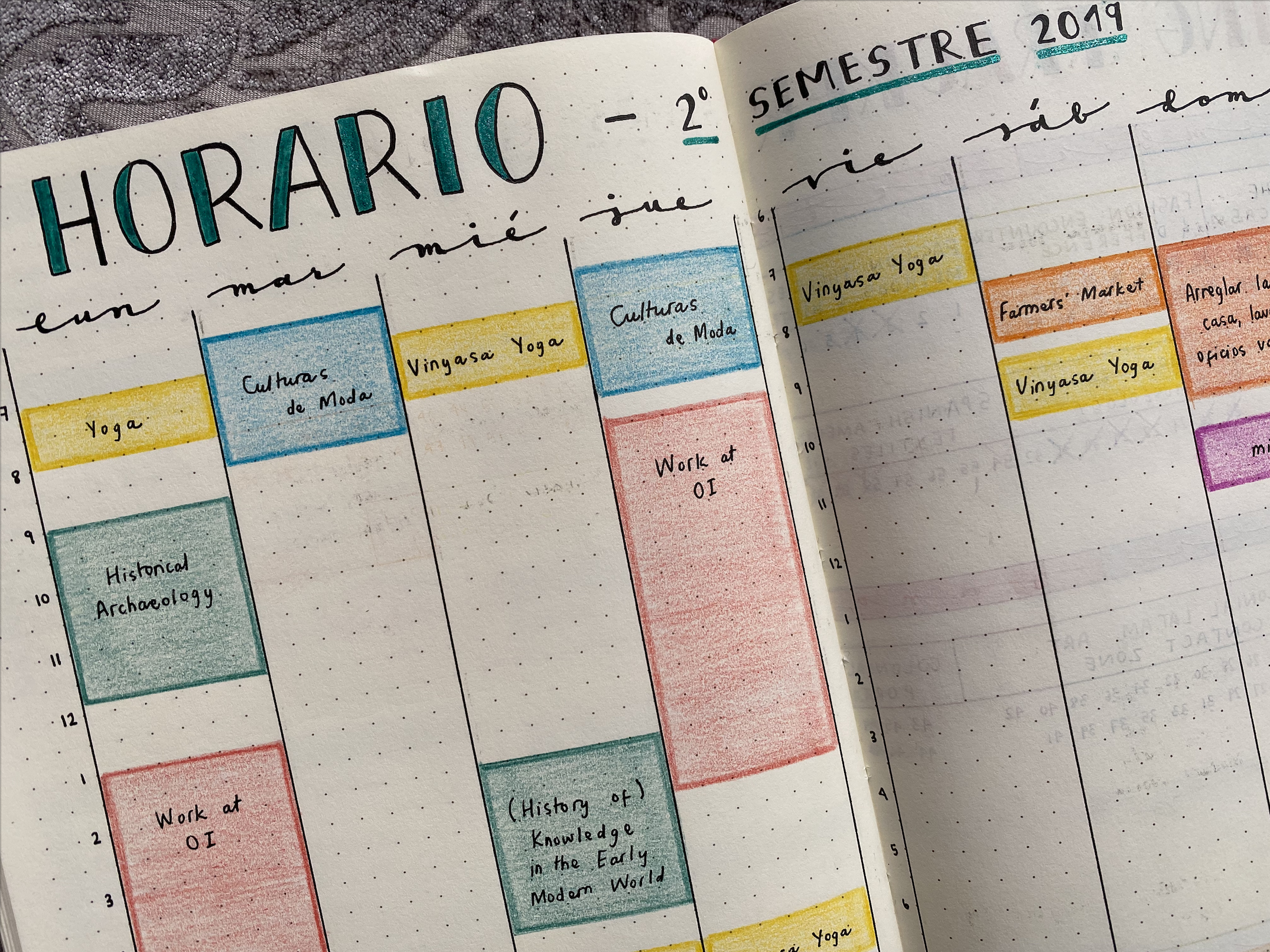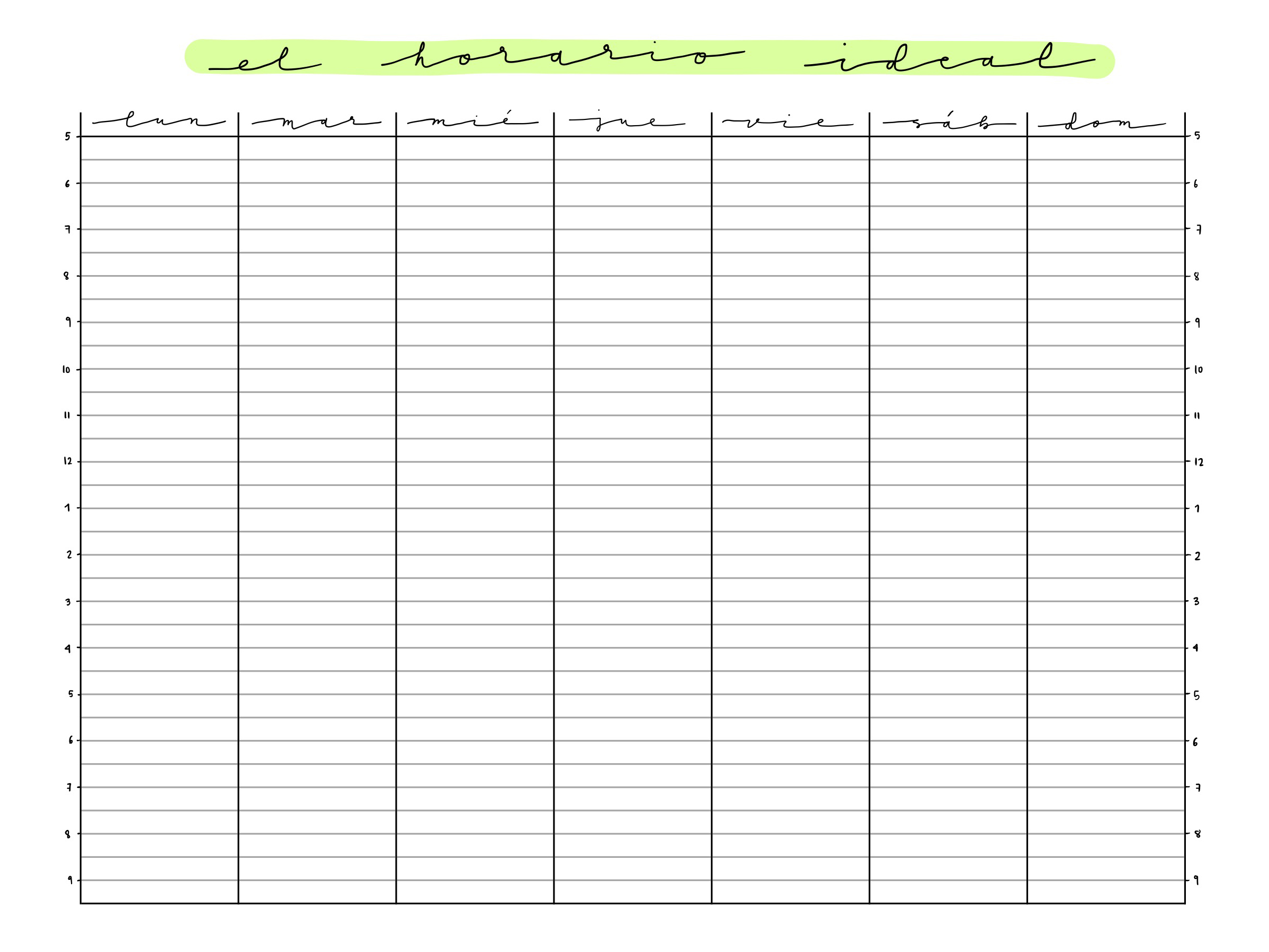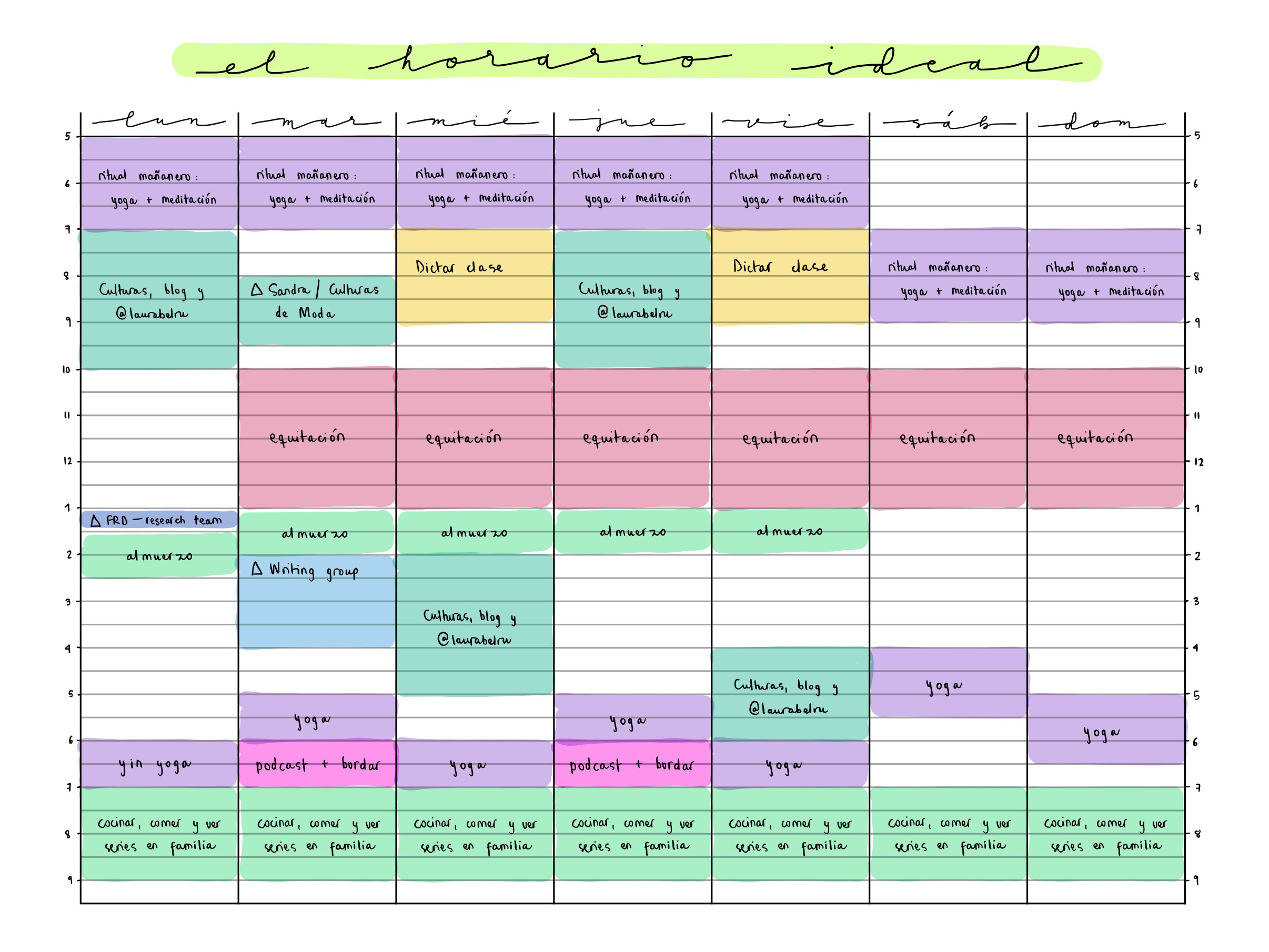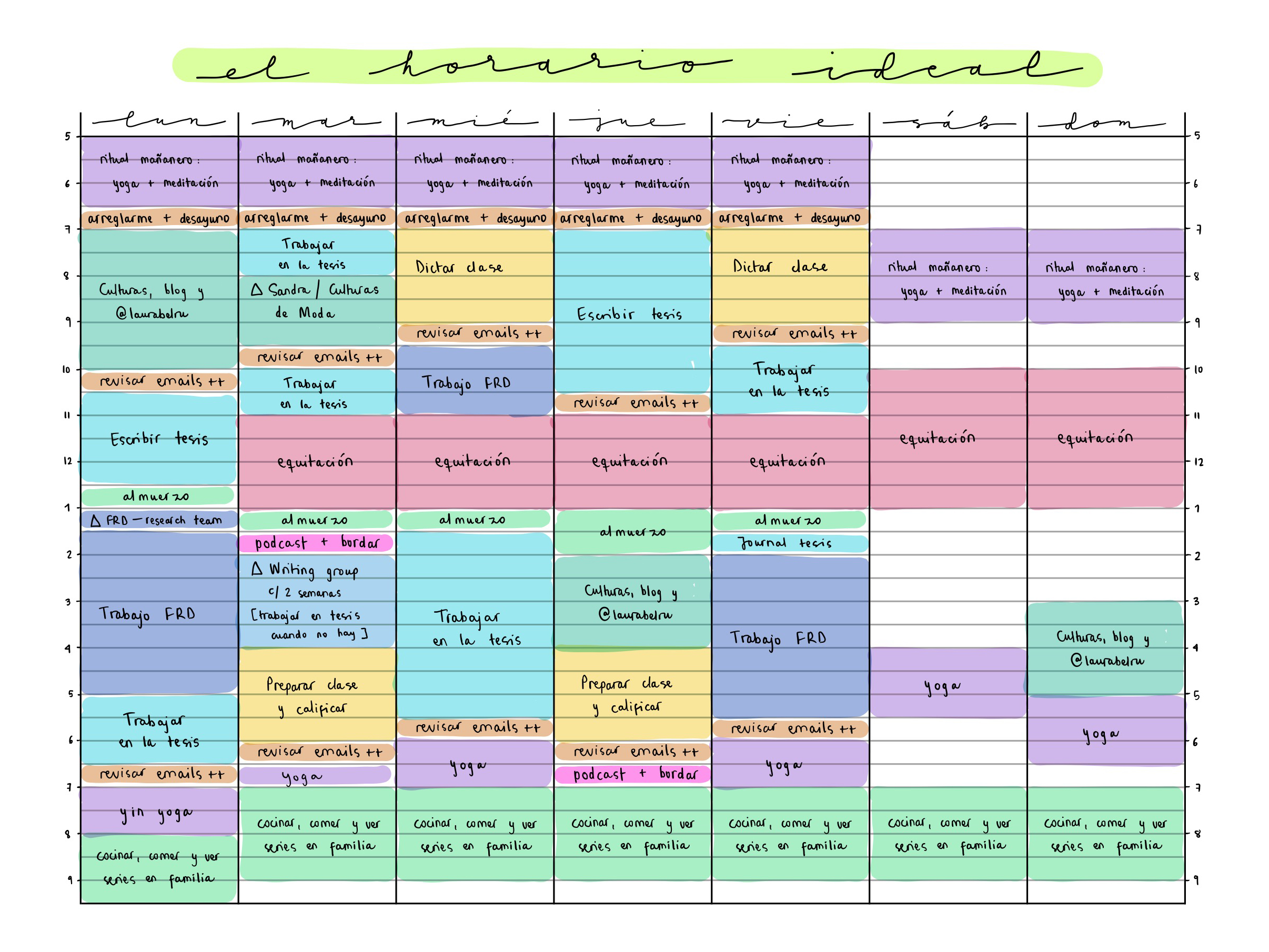Last week, I wrote that 2020 was exhausting (I’m sure others can relate). But it was also wonderful in so many ways and I can’t just ignore all of my achievements of the year (I also wrote about it last week on Instagram). After reflecting on it for a while, I realized that the main reason I managed to accomplish so many things during such a difficult year was the discipline with which I scheduled my weeks. Since I started my Ph.D., I have worked with a “master” timetable that I revisit every new semester. This timetable has designated times for the aspects of life that I consider important. This lets me align my priorities with my actions so that I can reach my intentions slowly through the year. Because we are in that collective mood of planning our upcoming year, today I share my process of crafting my ideal timetable.
Having designated times to do what I need and want to do for my own wellbeing is an essential part of my scheduling process. That is why I use a “reverse scheduling” technique, which I originally learnt from Dr. R. Kelly Crace (co-author of Authentic Excellence: Flourishing and Resilience in a Relentless World) and have slowly adapted to meet my own needs. The main aspect of the technique is to go backwards from how we tend to organize our timetable. We often begin scheduling with all of our work- or study-related duties, leaving everything else for our “free” time. Because our obligations can be never-ending (I, for example, know that I can always read one more paper or book or spend an extra hour or two or three writing), we end up having little to no time for those other things we want to do, including taking good care of ourselves. The result is that we feel overwhelmed, exhausted, and imbalanced in our lives. When we reverse schedule, we start with what we want to do and then work our way to our duties. In this way, we make sure to leave enough time for what we really want and need, in addition to our work and other obligations.
Some initial considerations
Before structuring our ideal week, we need to reflect on our obligations, priorities, and some other aspects of our lives that define our timetable. This helps us build an ideal timetable that is realistic and achievable according to our individual life rhythm. This is important because we want to be able to stick to the ideal timetable as much as possible. Your answers to the following questions will guide your scheduling process:
What are your main priorities?
I’ve heard people say that you can find your priorities where you invest most of your time and money. This might be somewhat true, but we must also acknowledge that there are a variety of external factors that might also define our schedule: most of us need to spend several hours a day working to earn an income and a lot of people need to spend at least a fragment of their day caring for others. But it is still useful to reflect on our current timetable to identify those aspects of life that we spend most time on. If they don’t align with what we want to be or achieve, chances are that there is at least one small change that we can do about it. So we can reorganize our ideal weekly timetable to better align our priorities with our time investment.
What are the duties, responsibilities, and obligations that you have to meet on a weekly basis and can’t move around?
As I mentioned above, the key to successful scheduling is to be realistic so that we can include as much of what we want to do in our lives. This question is aimed at identifying those aspects of your schedule that are mandatory and somewhat out of your control. For some people, this might be a weekly work schedule that they must fulfill (e.g. being in an office from 9–5 during the weekdays). For others, this might be a class schedule or a series of fixed weekly meetings they must attend. I, for example, have no strict “office” hours but I do have a series of weekly meetings and classes that I need to attend.
What is your most productive time of the day?
We all have different rhythms and recognizing this is essential to successful scheduling. Some people are most productive at night; others early in the morning. When we know these rhythms, we can make sure to schedule accordingly and save our most productive times for those tasks and actions that need the most of our attention. In my case, the answer to this question is early in the morning, right after practicing yoga, meditating, and eating breakfast. This means that I wake up early every day and start working by 7 am. I am not very productive in the afternoons, so I try to leave the tasks that don’t need as much focus for that time of the day. And I go to bed quite early so I try to be done with work by 6 pm every day.
What do you need to do to take care of yourself, even though you don’t often leave the time for that?
The answer for me is practicing yoga. It’s the first thing that goes when I’m super busy and stressed. But it is what I need the most, especially during those times! So I always make sure to schedule my yoga practices in my ideal timetable at times when I know that nothing will get in my way (unless I get in my own way). This is why yoga is the first item in my daily timetable: I go straight from my bed to the yoga mat and practice for about an hour before starting my day.
Steps for reverse scheduling
Having reflected on the questions above, we can move into creating our ideal weekly timetable. For me, this process has 5 steps:
1. Decide your wake-up time and bedtime
By this point we know the main events that will guide our week and our most productive times of the day. We will use this to decide how many times of sleep we ideally want to get and schedule them in our timetable. It is likely that these times will vary from day to day but I’m a big fan of routines because I think our bodies work better with them. I go to bed around 9 pm every night and sleep for 8 hours. I’ve come to a point in which my body wakes up at around the same time every morning, a few minutes before my alarm clock goes off at 5 am.
2. Fill out the events that you cannot move around
Here is where we add those mandatory meetings, classes, and work hours that you identified above. If there is anything that we can decide (for example, if we must work 8 hours a day but can choose the times), leave it for later. For my weekly timetable, I added in this step my weekly meeting with the research team at The Fashion and Race Database and with Sandra, my partner at Culturas de Moda. I also meet with my Ph.D. writing group every two weeks and I teach twice a week so I made sure to add those as well.
3. Add everything that you ideally want to do on a weekly basis
This includes what we do for fun, our wellbeing, and our passion projects. In my case, this includes a morning ritual of yoga and meditation (ideally 2-hour long), going horseback riding (about 3 hours if I take it easy), having dinner with my family and watch a series episode every night, and spending about 10–15 hours a week on Culturas de Moda, this blog, and my social media. Ideally, I would also like to spend at least one hour every day cooking and eating lunch, practice yoga again in the evenings, spend at least an hour embroidering while listening to podcasts at least twice a week, and spend the entire weekend without working.
This step fills out a large portion of the timetable—and we still need to add our “obligations”! But this is precisely the point. You’ll see why in a moment.
4. Add everything that you “have” to do
Here, finally, is where we add the weekly “obligations” that we have some control over. In my case, I must work 9 hours a week for the FRD, about 4–6 hours preparing to teach and grading (though this takes much longer some weeks), and 15–20 hours on my dissertation and other related duties. Lately, I have also been experimenting with scheduling times just to check my emails, messages, and social media, so I added this to my calendar. (I was inspired to do this by Christine from Scholar Culture and it has been amazing!)
5. Edit what you added in step 3 so that you can include everything in step 4
At some point, our timetable might start overflowing with events because we added too many things we want to do on step 3 of the process. So we’ll need to start eliminating some of those things and replace them with the items on step 4. This is ok. In fact, it is the whole point of reverse scheduling. The reason we want to do it in this order is because we will start eliminating what is least important to us. And whatever remains in our final timetable is what we really, really want to do. In my case, it turns out that I don’t mind spending part of my weekends working on Culturas de Moda or my blog. I often also grade during the weekends if I need extra time for that. It is also okay if I can’t have a full hour for lunch or if I can’t practice yoga twice a day; having dinner with my family and practicing yoga during my morning ritual are much more important to me. Finally, I am also okay with reducing my morning ritual for half an hour and taking only two hours on my daily riding training sessions.
In summary, when we reverse schedule, we end up with what matters most to us and what we care the most about on our timetable. This means that we will have enough time for what we “want” to do and what we “must” do every week. As a result, we will be able to do something for our wellbeing and for reaching our most heartfelt intentions, without leaving our responsibilities aside, every week.
Having an ideal timetable is super important for me because I use it as a guide as I schedule my weeks. The structure of the timetable has designated times to work and to spend time trying to achieve my intentions for the year, which helps me organize my priorities every week. But this timetable is also a model and nothing else. Some weeks it is almost impossible to stick to it. Sometimes we have conferences, meetings, travel plans, and other additional—and maybe even unexpected—events that prevent us from following our timetable. But it still serves as a reference guide for when we need to decide on how to spend our time or when we need to schedule new meetings and events.
Have you tried reverse scheduling? How do you organize your timetable? Please comment with your thoughts below.
Happy Monday!
L.
